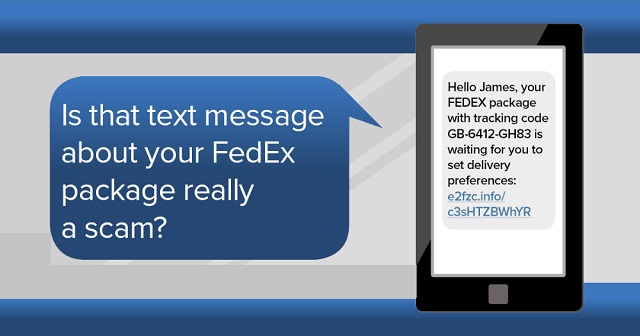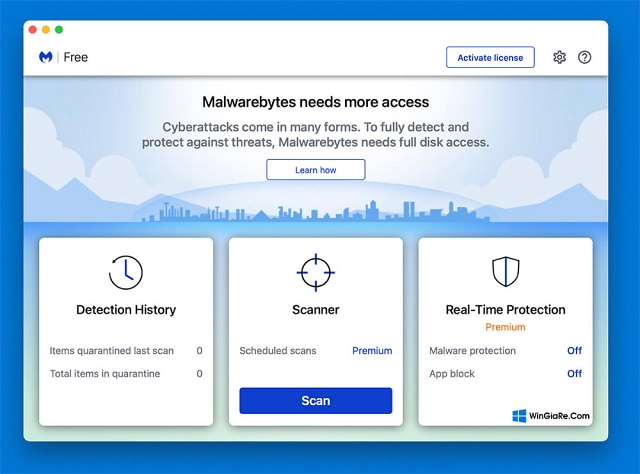Hey! Are you looking for US9514961195221? We will shed light on the “Us9514961195221” scam, an online fraud scheme that has been circulating and targeting individuals. However, by understanding the nature of this scam and its tactics, you can protect yourself from falling victim to it.
Stay informed and vigilant to keep your personal information and finances secure. So, Let’s explore the details of the usps tracking Us9514961195221 scam and empower ourselves to stay safe in the digital world.

What is the US9514961195221 ‘Your Package Cannot Be Delivered’ Scam, and How Does It Work?
The US9514961195221′ Your Package Cannot Be Delivered’ scam is a deceptive scheme that aims to trick individuals into revealing their personal information or falling victim to financial fraud. Also, Typically, scammers send emails or text messages claiming that a package addressed to the recipient could not be delivered.
However, these links usually lead to fake websites designed to mimic the shipping company’s official website. Once the recipient enters their information, it is by scammers, who can then misuse it for identity theft, unauthorized purchases, or other fraudulent activities.

How It Works:
Working Procedure of the track US9514961195221′ Your Package Cannot Be Delivered’ Scam:
- Initial Contact: Scammers initiate the scam by sending out fraudulent messages, such as emails or text messages, to many recipients.
- Sense of Urgency: The scam messages create a sense of urgency and importance by stating that immediate action is required to resolve the delivery issue.
- Reference Number: The scam messages include a reference number, such as “US9514961195221 tracking,” to make it seem official and specific to the recipient.
- Request for Personal Information: To supposedly resolve the delivery problem, scammers request personal information from the recipient.
- Fake Websites or Phishing Links: Sometimes, the scam messages may include links to fake websites resembling legitimate shipping companies’ official websites.
- Data Exploitation: Once the scammers obtain the victims’ personal information, they can exploit it for various fraudulent purposes.
Examples of such scams: US9514961195221
Example 1: Fake FedEx Package Delivery Scam
The scam message posing as FedEx informs the recipient about a failed delivery attempt. It can also includes a reference number and requests the recipient to click on a link or provide personal information to reschedule delivery.
Example 2: Bogus DHL Delivery Notification Scam
The fraudulent DHL notification claims a package with the reference number couldn’t be due to an incomplete address. They click on a link or reply with their details for successful delivery.
Example 3: Fraudulent UPS Parcel Alert Scam
The scammer sends a deceptive UPS alert stating that the recipient’s package is on hold. Also it includes a reference number and asks the recipient to provide personal information or click a link to resolve the issue.
Example 4: Phony USPS Shipment Delay Scam
The phoney USPS message informs the recipient about a shipment delay and provides a reference number. It also directs the recipient to click on a link or provide personal information to expedite delivery.
Example 5: Deceptive Amazon Prime Delivery Issue Scam
The deceptive Amazon Prime message claims a delivery issue with the recipient’s package. It can also includes a reference number and instructs the recipient to click on a link or provide personal information for resolution.
Example 6: False Royal Mail Package Retrieval Scam
The false Royal Mail notification states that the recipient’s package requires retrieval due to an unpaid fee. It includes a reference number and also prompts the recipient to click on a link or provide personal information to arrange collection.
Example 7: Fake Hermes Parcel Redelivery Scam
The fake Hermes message notifies the recipient of a failed delivery attempt and provides a reference number. It also requests the recipient to click on a link or provide personal information to reschedule the delivery.
Example 8: Fraudulent TNT Express Package Update Scam
The fraudulent TNT Express message provides a package update with a reference number. It asks the recipient to click on a link or provide personal information for further details or to rearrange delivery.
Example 9: Deceptive Canada Post Shipment Notification Scam
The deceptive Canada Post notification claims an issue with the recipient’s shipment and includes a reference number. It also instructs the recipient to click on a link or provide personal information to resolve the issue.
Example 10: Bogus Australia Post Delivery Failure Scam
The bogus Australia Post message states a delivery failure for the recipient’s package and provides a reference number. It also prompts the recipient to click a link or provide personal information for rescheduling or collection.
What Should I Do When Receiving a Scam Text?
When receiving a scam text, you must immediately protect yourself from potential fraud or identity theft. Here are some following steps are:
- Do not respond: Avoid engaging with the scammer or replying to the text message. Responding may confirm that your phone number is active and could lead to further scam attempts.
- Do not click on links: Refrain from clicking on any links within the text message. These links may lead to malicious websites or phishing attempts to capture your personal information.
- Do not provide personal information: Never provide personal or financial information in response to a scam text. Legitimate organizations will never ask for sensitive data through unsolicited messages.
- Block the sender: Use your phone’s blocking feature to prevent further communication from the scammer. It also helps to reduce the chances of receiving additional scam messages from the same source.
- Report the scam: Forward the scam text to your mobile service provider. They may have specific procedures to investigate and act against scammers. You can also report the fraud to your country’s local authorities or the appropriate regulatory agency.

- Educate yourself: Stay informed about different scams and common tactics scammers use. Being aware of the latest scams empowers you to recognize and avoid them in the future.
- Protect your personal information: Regularly review your privacy settings on social media platforms and avoid sharing sensitive information online. Be cautious about providing your phone number or email address on unfamiliar websites.
- Consider using a spam filtering app: Install a reliable one on your smartphone. These apps can help identify and block scam texts before they reach your inbox.
Check if you’re device is infected with the malware:
If you suspect malware, there are several signs to watch out for. Here usps US9514961195221 some information to help you determine if your device is infected:
- Performance issues: Malware can significantly impact your device’s performance.
- Unwanted pop-ups or ads: Malware often displays intrusive pop-up ads or redirects your browser to unwanted websites.
- Unusual behaviour: Malware can exhibit various unusual behaviours on your device.
- Unexplained data usage: If you notice a significant increase in data usage on your device.
Here are some versions of Malwarebytes that you can consider:
- Malwarebytes for Windows: This version is designed for Windows operating systems and provides comprehensive protection against malware, ransomware, and other threats.
- Malwarebytes for Mac: Specifically built for macOS, Malwarebytes for Mac offers advanced malware detection and removal capabilities.
- Malwarebytes for Android: This mobile version of Malwarebytes protects Android devices from malware, adware, and phishing scams.
- Malwarebytes Browser Guard: A browser extension for popular web browsers like Chrome and Firefox.
Malwarebytes for Android: US9514961195221
1. Malwarebytes for Android:
Malwarebytes for Android is a free antivirus app that protects your Android device from malware, ransomware, and other threats. It also includes a privacy audit feature that tells you which apps can access your personal information.
2. Malwarebytes Browser Guard:
Malwarebytes Browser Guard is a free extension for Chrome that blocks ads, trackers, and other malicious content. It also protects you from phishing attacks and other online scams.
3. Malwarebytes Anti-Exploit:
Malwarebytes Anti-Exploit is a free app that protects your Android device from exploit attacks. These attacks exploit vulnerabilities in your device’s software to access your data.

Malwarebytes for Windows: US9514961195221
1. Malwarebytes Free:
Malwarebytes Free is a free antivirus and anti-malware program that helps protect your Windows computer from malware, ransomware, and other threats. It also offers real-time protection, on-demand scans, and a system scanner to remove malware that has already infected your computer.
2. Malwarebytes Premium:
Malwarebytes Premium is a paid version of Malwarebytes that offers additional features, such as:
- Web protection: Blocks malicious websites and downloads.
- Anti-exploit protection: Protects your computer from attacks that exploit vulnerabilities in your software.
- Privacy protection: Helps protect your personal information from being tracked and stolen.
- System clean-up: Removes junk files and other unnecessary items from your computer to improve performance.

3. Malwarebytes Anti-Ransomware:
In addition, Malwarebytes Anti-Ransomware is a specialized tool that helps protect your computer from ransomware attacks. Ransomware is malware that encrypts your files and demands a ransom payment to decrypt them.
Malwarebytes for Mac:
1. Malwarebytes for Mac:
Malwarebytes for Mac is a free antivirus and anti-malware program that helps protect your Mac from malware, ransomware, and other threats. It offers real-time protection, on-demand scans, and a system scanner to remove malware that has already infected your Mac.

2. Malwarebytes Anti-Malware for Mac:
Malwarebytes Anti-Malware for Mac is a paid version of Malwarebytes for Mac that offers additional features,
3. Malwarebytes for Mac X:
Malwarebytes for Mac X is the latest version of Malwarebytes for Mac. It offers all of the features of Malwarebytes for Mac, plus additional features such as:
- Machine learning: Uses machine learning to detect and remove new and also emerging threats
- Behavioural detection: Detects and removes malware that tries to hide from traditional antivirus scanners
- Rootkit protection: Protects your Mac from rootkits, a type of malware that can give attackers complete control of your system.
Finally, you must stay vigilant in online scams and protect yourself from potential fraud. One such scam is the US9514961195221 “Package Cannot Be Delivered” scam, which preys on unsuspecting individuals by luring them also into revealing personal information or making payments under false pretences.
Although, understanding the nature of this scam and adopting preventive measures can help safeguard your personal and financial well-being.
Conclusion:
Although, the US9514961195221 “Package Cannot Be Delivered” scam is a deceptive tactic employed by fraudsters to trick individuals into divulging sensitive information or making monetary transactions under false pretences. By pretending to be a reputable shipping service, scammers send fraudulent notifications claiming that a package cannot be delivered, and also often citing various reasons.
The aim is to create a sense of urgency and manipulate victims into sharing personal details or making payments and also to resolve the alleged delivery issue. Thanks for reading and follow Techyrobo the for more details.




